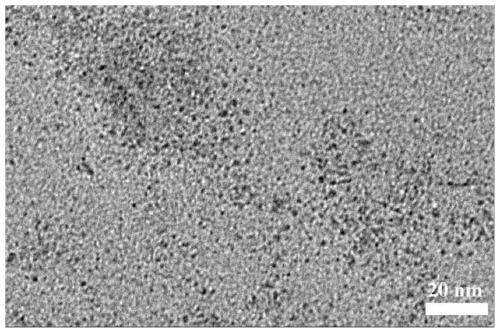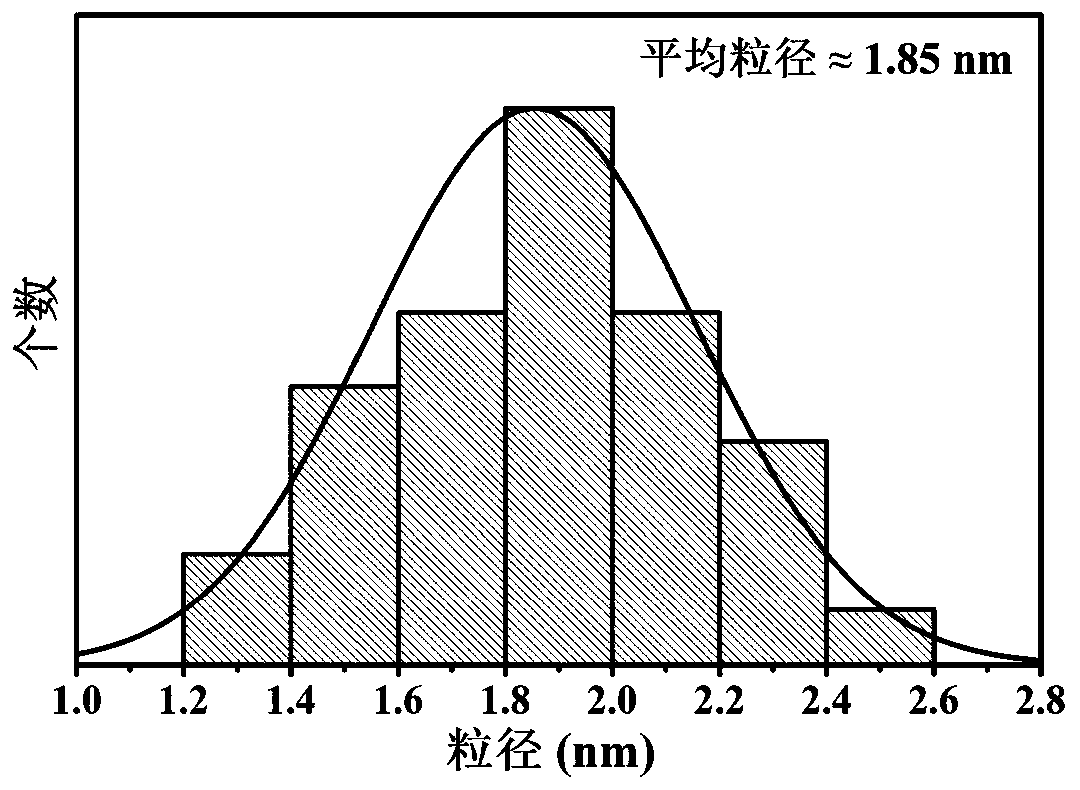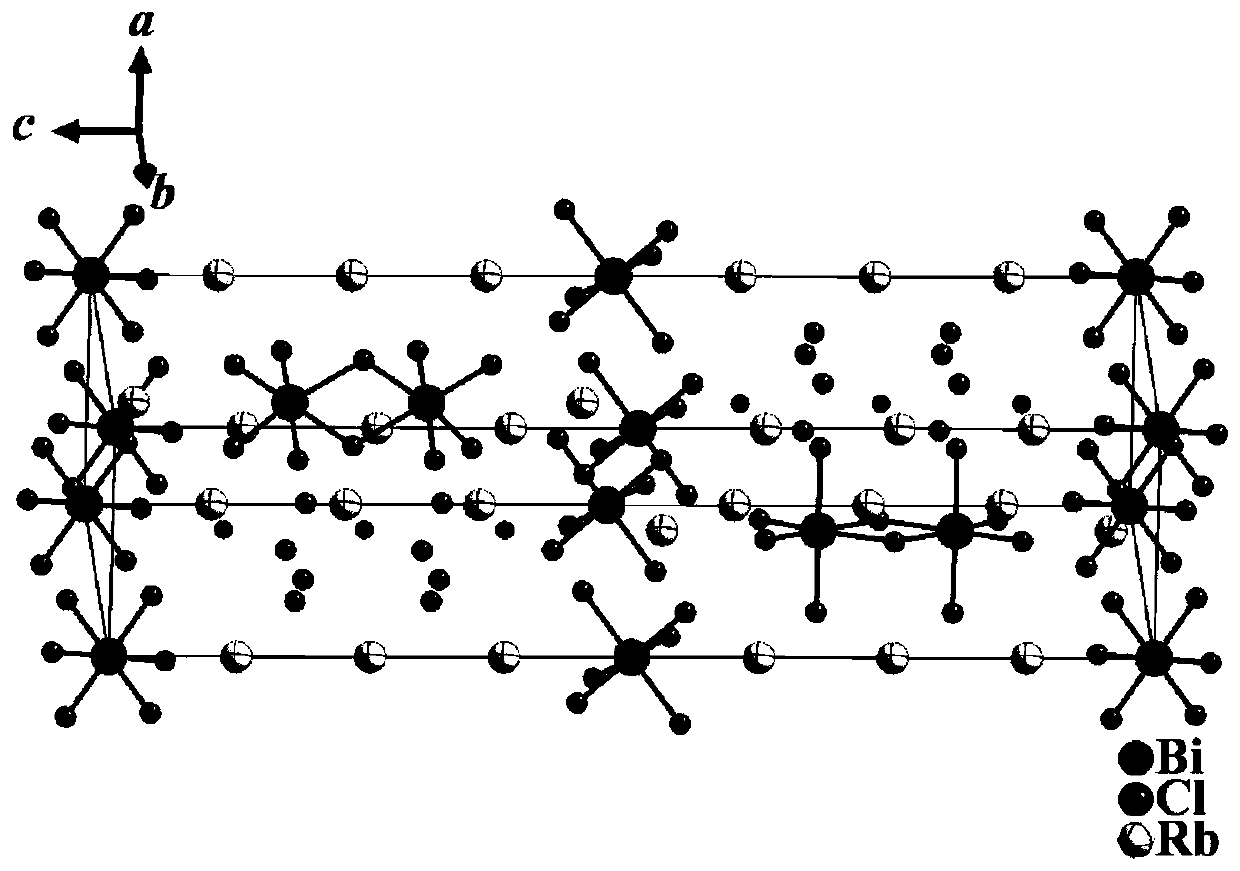Novel rubidium bismuth chloride perovskite nanocrystalline Rb7Bi3Cl16 and preparation method thereof
A perovskite and nanocrystal technology, applied in nanotechnology, chemical instruments and methods, bismuth compounds, etc., can solve the problems that restrict the application and promotion of perovskite nanocrystals, strong lead toxicity, easy degradation, etc., and achieve morphology and Uniform particle size, simple method, and good thermal stability
- Summary
- Abstract
- Description
- Claims
- Application Information
AI Technical Summary
Problems solved by technology
Method used
Image
Examples
Embodiment 1
[0029] Example 1 sample preparation
[0030] As a new type of rubidium bismuth chloride perovskite nanocrystalline material Rb 7 Bi 3 Cl 16 The preferred embodiment, its method is as follows: raw material RbCl, BiCl 3 , polar solvent, straight-chain organic amine and straight-chain organic carboxylic acid are mixed according to a certain ratio and placed in a sample bottle for ultrasonication, and then a constant temperature reaction is carried out. The reaction temperature is 60-100°C, and the reaction time is 1-4 hours. Slowly at room temperature, the reaction solution was dispersed in a weak polar solvent at a ratio of 1:10, and the large particles were removed by centrifugation to obtain clear and transparent Rb 7 Bi 3 Cl 16 Nanocrystalline Colloidal Solution. The relationship between the reaction ratio and conditions of the experiment and the sample number is shown in Table 1.
[0031] Table 1 Relationship between sample synthesis conditions and sample numbers
[...
Embodiment 3
[0035] Preparation and structure analysis of embodiment 3 sample crystal
[0036] To test Rb 7 Bi 3 Cl 16 Nanocrystalline composition and structure, Rb was synthesized by hydrothermal method 7 Bi 3 Cl 16 Single crystal, the specific method is as follows: RbCl and BiCl 3 According to the ratio of 1:2.33, it was mixed and dissolved in concentrated hydrochloric acid, hydrothermally reacted at 160°C for 24 hours, and then slowly cooled and crystallized to obtain transparent block crystals. And using single crystal X-ray diffraction to analyze the Rb 7 Bi 3 Cl 16 Single crystal structure analysis.
[0037] The single crystal X-ray diffraction was performed on a Rigaku Mercury CCD type X-ray single crystal diffractometer from Bruker, Germany. The data collection temperature is 293K, and the diffraction light source is the Mo-Kα ray monochromated by graphite The scanning method is ω-2θ; the data is processed by the Multi-Scan method for absorption correction. The struc...
Embodiment 4
[0041] Embodiment 4 fluorescence test experiment and result
[0042] The fluorescence test experiment of sample 1# is as follows: Adopt Cary Eclipse spectrofluorometer (Varian, America) and QM / TM 3360 (PTI, America), carry out fluorescence detection to sample 1#, its excitation wavelength is 365nm, and emission wavelength is 437nm . Taking quinine sulfate as a standard, the calculated relative fluorescence quantum yield is 28.43%. The test results showed that Rb 7 Bi 3 Cl 16 Nanocrystals have very good blue fluorescence, such as Figure 5 .
PUM
 Login to View More
Login to View More Abstract
Description
Claims
Application Information
 Login to View More
Login to View More - R&D Engineer
- R&D Manager
- IP Professional
- Industry Leading Data Capabilities
- Powerful AI technology
- Patent DNA Extraction
Browse by: Latest US Patents, China's latest patents, Technical Efficacy Thesaurus, Application Domain, Technology Topic, Popular Technical Reports.
© 2024 PatSnap. All rights reserved.Legal|Privacy policy|Modern Slavery Act Transparency Statement|Sitemap|About US| Contact US: help@patsnap.com










